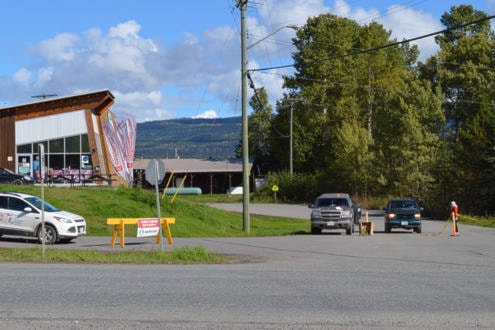One week after going into lockdown following three confirmed cases of COVID-19, Witset is now reporting 14 cases of the disease in the community.
In a notice posted to the Witset News and Events Facebook page Witset Health Centre health director Beverley Percival,
The band office, health centre and all Kyah Wiget Educational Society (KWES) facilities remain closed until further notice and all entrances to the village are blockaded. Anybody going out or in are being screened and limited to one person per household per day for essential shopping only.
The gas bar and Indigenous Bloom cannabis store are open only to residents and masks are mandatory with a limit of two customers at a time for the former and one customer for the latter.
“This is not about individuals, it is about taking measures to eliminate the threat of COVID-19 and protect ourselves and our families,” the notice stated.
It also assures people there is no blame to be laid and urges people to keep their personal bubbles to six individuals.
The measures above and others were part of the First Nation’s COVID-19 Strategy Plan released two days after the initial outbreak.
The plan implements strict measures to contain the spread of the virus including a stay-at-home order.
“This means no visiting, even within the community,” the plan states. “Each family unit will remain home and not accept visitors until 14 days have passed.”
Other measures include:
Deliveries are restricted to those that are essential and prearranged and will be dropped off at the checkpoints for pickup. People attempting to enter the village will be subject to a temperature check and questionnaire regarding where they have been and who they have come in contact with.
Travel ban on meetings outside the local region for chief and council, management and staff and personnel of band owned and operated businesses and cultural entities.
Schools will remain closed for the 14-day quarantine period and afterward restricted to students and staff only for the remainder of the school year.
The first notice, published Sept. 18, added community members should practice safety measures and to contact the Northern Health Covid-19 Online Clinic Information Line at 844-645-7811 for testing if people are experiencing symptoms or worried about having contracted the disease.
“This service is staffed by nurses, physicians, and nurse practitioners, offering virtual screening and assessment for individuals who feel they may have COVID-19 or feel they have been exposed,” states the Northern Health website. “By calling the Online Clinic, Northern BC residents can receive information, may undergo virtual screening, be assessed by a nurse, and may see a physician or nurse practitioner if it is required.”
At the end of August, the Nisga’a health authority reported three cases in the Nass Valley and warned of a potential exposure during funeral and memorial services for famed Nisga’a Treaty negotiator Dr. Joseph Gosnell.
Currently the Nak’azdli Whut’en First Nation near Fort St. James is reporting 13 cases.
READ MORE: COVID-19 cases rise to 13 at B.C. First Nation near Fort St. James
As of Sept. 17, Indigenous Services Canada was aware of 110 cases of COVID-19 on First Nation reserves in the province. There were 564 across the country (242 in Alberta, 95 in Saskatchewan, three in Manitoba, 69 in Ontario and 45 in Quebec.
editor@interior-news.com
Like us on Facebook and follow us on Twitter
